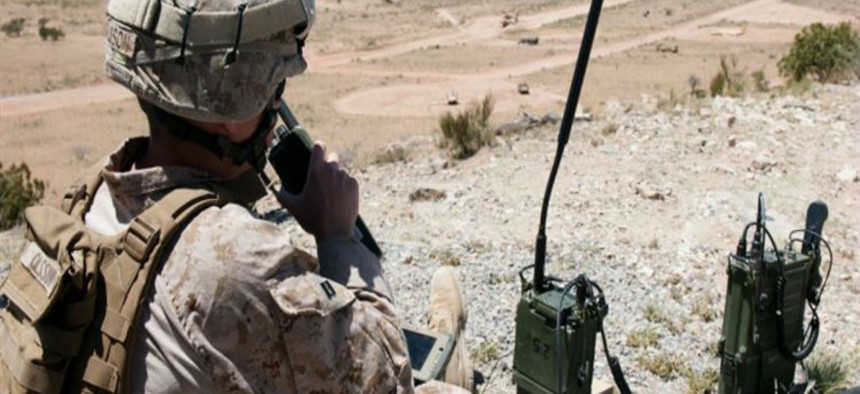OPED: new conformal batteries expedite moves to a digital soldier
New conformal batteries better enable soldier-mounted tech such as computers, navigation system and night vision.
By Alex Stepansky, General Manager, Epsilor.com
“An Army marches on its stomach” is one of Napoleon Bonaparte’s most famous quotes, one which implies that armed forces need to be well provisioned in order to succeed in the battlefield.
While war fighters of the past needed to be supplied mainly with food and water, today’s digital soldier must also have sufficient energy to power all the electronic equipment he carries.
For even the most ordinary missions, digital soldiers rely on tactical radios, ruggedized computers, navigation systems, night vision systems and gun sights.
The work assumption of the US army and of other advanced forces is that infantry soldiers must have enough portable energy for 72 hours of continuous operation without resupply.
John P. Howell, project director of US Army Soldier Systems Integration recently said in an interview that while a typical army platoon fighting in the Gulf War in 1991 required 1.74 kilowatt hours of energy for such a 72-hour mission, today, the same unit would need 31.35 kilowatt hours of energy to operate their devices.
At the soldier level, 10 years ago it used to be 500Wh for a 72-hour mission. Today, it is close to 1,000Wh for the same mission.
Fast-growing Requirements, Slow Battery Evolution
While energy requirements grow quite fast, energy sources are subject to the relatively slow evolution of battery technology that improves by some 10 percent every three years. The solution, therefore, to powering soldier electronics lies in multi-disciplinary creative power management solutions that combine the best battery chemistry available with full power transmission transparency, power sources standardization, excellent battery engineering and mass field charging. Infantry soldiers still need to carry the weight, but they may feel better doing so.
Today’s Lithium Ion batteries have an energy density of 250Wh/kg at the cell level and some 200Wh/kg at the pack level. This means that a typical NATO soldier has to carry 4–5 kg of batteries.
To power this equipment a soldier must carry multiple spare batteries of different kinds and shapes. In addition, at the end of most days, some of the devices’ batteries are still in pretty good condition, while other batteries will be fully drained. Thus, while the soldier is still carrying available energy, he is no longer effective.
Central Power Sourcing and Management
To address the issue of a multitude of batteries, the US Army funded the pioneering Soldier Wearable Integrated Power Equipment System. This power system enabled soldiers to power all their electronic equipment from a single battery through smart cabling and docking stations that were designed to fit most common types of portable military equipment.
The highly efficient central energy hub trickle charges all the battery-powered worn equipment and ensures that they are always fully charged.
This has led to a decrease of some 1.5 kg in the battery weight carried by an infantry soldier, and eliminates the logistic quagmire of resupplying a large range of battery types to the warzone.
Conformal Batteries
An innovative solution that accommodates the larger size of a central battery is a flat ergonomic, flexible pack that conveniently integrates into the soldier’s vest. The conformal battery is much more comfortable to carry, does not hinder soldiers’ movements and enables the troops to carry out their mission without disruption.
NetWalker – Integrating Energy and Communication
Digital soldiers also need to interconnect their sensors, tactical computing and communication devices.
In order to achieve full wideband connectivity, a data switch needs to be a real wideband communication protocol. Third generation hubs incorporate ETHERNET communication of up to one GBpS streaming rate to support advanced high definition video streaming, while also supporting USB2 protocol.
It can operate two different networks required today by military customers. These new systems support the connection of two hubs together and have the potential for faster networks. The 200W ports support high power consumers such as laser designators, jammers and special radios.
The system will allow the transmission of visual data obtained by sensors and target acquisition systems to the tactical computer where the soldier can add additional information. This data is transmitted to the command and control center.
Only 10 years ago, in order to enable such a level of soldier connectivity, armies needed to set up a 20 ft. communication shelter with special interconnectivity capabilities and intelligence exploitation stations. Today similar capabilities are offered by soldier wearable systems.
Mass Charging – Close to Battlefield
Military organizations have concluded that in order to increase the availability of their electronic devices, battery chargers need to be deployed close to the operating forces. However, as has been shown in recent conflicts of higher intensity, after a couple of fighting days battery inventories come to an end and the operational tempo is compromised due to depleted batteries. The charging capability that was sufficient during regular operations is not enough.
Therefore, several military and industrial R&D programs are currently developing sophisticated charging capabilities. The systems being developed will be deployed in the field in special charging shelters, supporting the rapid recharge of an infantry battalion within less than a day, and with special emphasis on the conformal batteries that each soldier will carry as standard.
Armies still march on their stomachs. But today’s armies have to feed much more than just hungry soldiers.
---
The writer is the general manager of Epsilor.com, a global developer and manufacturer of military power systems and energy sources




